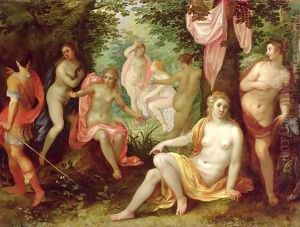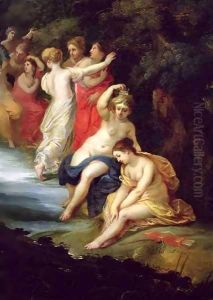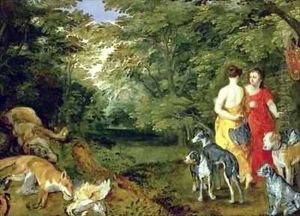Jan II & Balen, Jan van Brueghel Paintings
Jan II Brueghel was a prominent Flemish painter born in 1603, inheriting a rich legacy from his father, Jan Brueghel the Elder, and his grandfather, Pieter Bruegel the Elder, who were both significant figures in the Northern Renaissance. Jan II's work is characterized by a continuation of his family's tradition, focusing on detailed landscape and still life paintings, but he also infused his compositions with a sense of baroque dynamism that was becoming popular during his time. His oeuvre includes lush floral pieces, intricate landscapes, and allegorical scenes, showcasing his mastery in handling detail and his ability to create depth and realism.
Jan II was not only a painter but also a vital figure in the artistic community of Antwerp, where he was part of the local Guild of Saint Luke. He played a significant role in the city's cultural life, contributing to the development of the Baroque style in the Southern Netherlands. Despite the overshadowing fame of his forebears, Jan II managed to carve out his own niche, adapting and evolving the familial style to suit the tastes of his era. His works were sought after by collectors and patrons, not only in the Low Countries but across Europe, illustrating his broad appeal and the high regard in which he was held.
Collaboration was a common practice among artists of the time, and Jan II Brueghel frequently worked with other painters, including Peter Paul Rubens, with whom he created several pieces. These collaborations allowed for an exchange of ideas and techniques, further enriching Jan's artistic capabilities. His legacy, though somewhat eclipsed by his father and grandfather, remains significant in the history of Flemish art, providing a bridge between the Renaissance and Baroque periods. Jan II Brueghel's death in 1671 marked the end of an era, but his contributions to the Flemish artistic tradition continue to be celebrated for their beauty, precision, and innovative spirit.


